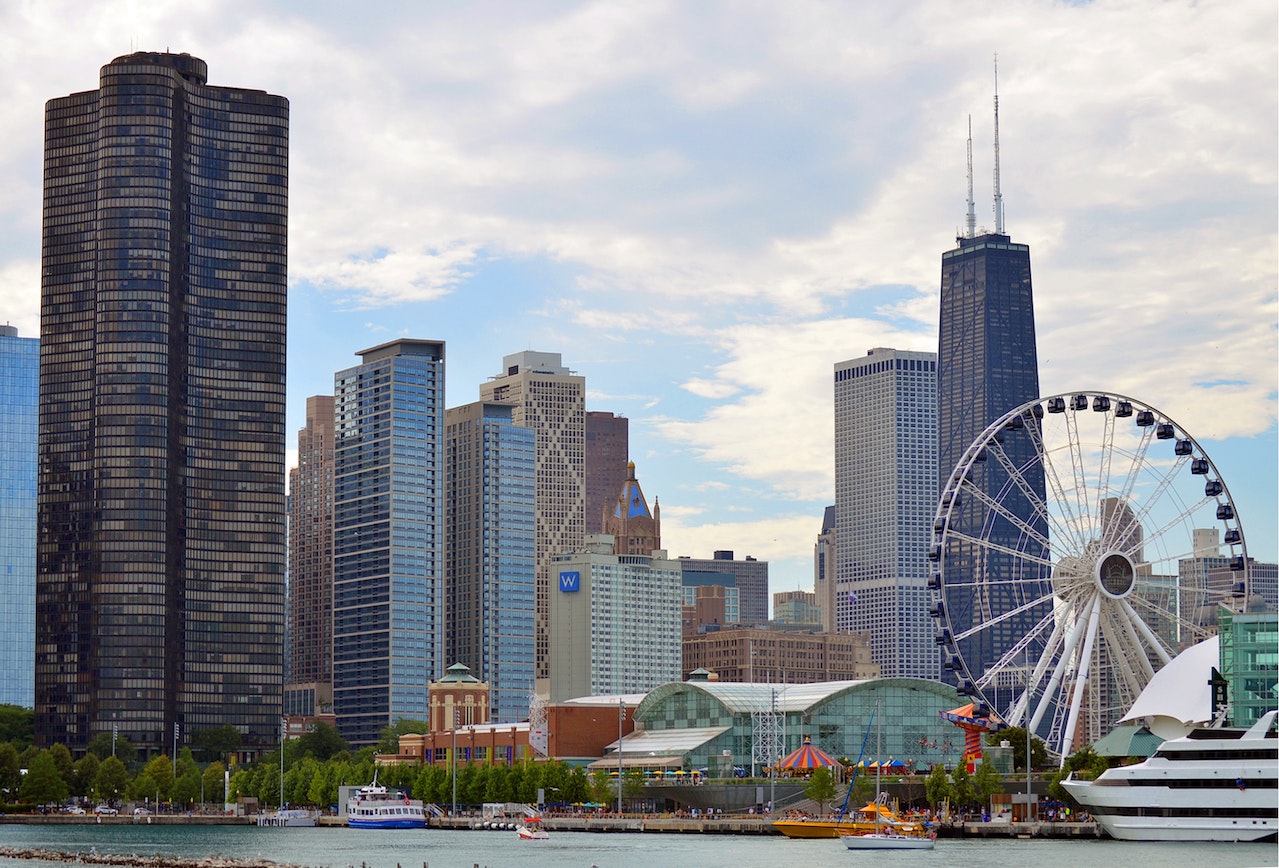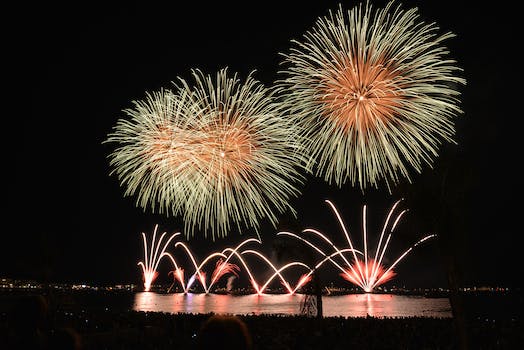Gun Violence in Chicago: A Look at the Statistics for April 2016
In April 2016, Chicago experienced a surge in gun violence that left many residents and officials concerned. The city has long been plagued by gun violence, but the numbers for April were particularly alarming. According to the Chicago Police Department, there were 316 shooting incidents in the city in April, resulting in 49 deaths and 246 injuries. This represents a significant increase from the same period in 2015, when there were 225 shooting incidents, 36 deaths, and 175 injuries.
The majority of the shootings occurred in the city’s South and West sides, which are known for their high crime rates. However, there were also incidents in other parts of the city, including downtown. The shootings were not limited to any particular time of day, with incidents occurring at all hours.
The reasons for the increase in gun violence are complex and multifaceted. Some experts point to the availability of guns in the city, which has some of the strictest gun laws in the country but is surrounded by states with more lax regulations. Others point to the city’s poverty and lack of economic opportunities, which can lead to desperation and crime. Still others point to the breakdown of trust between the police and the community, which can make it difficult to solve crimes and prevent violence.
Whatever the reasons, the impact of the gun violence on the city’s residents is clear. Many people are afraid to leave their homes, and some have even moved out of the city altogether. Businesses have been affected, with some closing early or not opening at all due to safety concerns. The city’s tourism industry has also been impacted, with some visitors canceling trips due to the violence.
In response to the surge in gun violence, city officials have taken a number of steps. Mayor Rahm Emanuel has called for stricter gun laws at the state and federal levels, and has also increased funding for police and community programs aimed at reducing violence. The police department has also stepped up its efforts, with more officers on the streets and increased use of technology to track and prevent crime.
Despite these efforts, the gun violence in Chicago continues to be a major issue. The city has seen a slight decrease in shootings and homicides in recent years, but the numbers are still far too high. Many residents and officials are calling for more comprehensive solutions, including addressing the root causes of violence and investing in education, job training, and other programs that can help lift people out of poverty.
As the city continues to grapple with the issue of gun violence, it is clear that there are no easy answers. However, by working together and taking a comprehensive approach, it is possible to make progress and create a safer, more peaceful city for all residents.
The Controversial Closing of Chicago Public Schools in April 2016
In April 2016, the city of Chicago was rocked by the controversial decision to close down dozens of public schools. The move was met with widespread protests and criticism, with many arguing that it would disproportionately affect low-income and minority students.
The decision to close the schools was made by the Chicago Board of Education, which cited budget constraints and declining enrollment as the primary reasons for the closures. In total, 54 schools were shut down, affecting over 30,000 students and resulting in the loss of thousands of teaching jobs.
Critics of the decision argued that the closures would have a devastating impact on the affected communities, particularly those in low-income areas. They pointed out that many of the schools targeted for closure were located in predominantly African American and Latino neighborhoods, and that the move would exacerbate existing inequalities in the city’s education system.
Protesters took to the streets in the weeks leading up to the closures, staging rallies and sit-ins outside of schools and government buildings. Many argued that the decision was part of a broader trend of privatization and austerity measures that were harming public education across the country.
Despite the protests, the closures went ahead as planned, with the affected students and teachers forced to find new schools and jobs. The move was widely criticized by education experts and activists, who argued that it would do little to address the underlying issues facing Chicago’s public schools.
In the years since the closures, the debate over their impact has continued. Some argue that the move was necessary to address the city’s budget crisis and declining enrollment, while others maintain that it was a shortsighted and harmful decision that will have long-lasting consequences for the affected communities.
Regardless of one’s position on the closures, it is clear that they represent a significant moment in the ongoing struggle for equitable and accessible public education in Chicago and beyond. As the city continues to grapple with the challenges facing its schools, it is important to remember the lessons of April 2016 and work towards a more just and equitable future for all students.
Chicago Cubs’ Record-Breaking Start to the 2016 Baseball Season
In April 2016, the Chicago Cubs made headlines with their record-breaking start to the baseball season. The team had not won a World Series since 1908, and fans were hopeful that this could be the year they finally broke the curse.
The Cubs began the season with a 9-0 victory over the Los Angeles Angels, and they continued to dominate throughout the month of April. They won their first six games and finished the month with a record of 17-5, the best in the league.
One of the keys to the Cubs’ success was their pitching. The team had a collective ERA of 2.29 in April, the lowest in the league. Jake Arrieta, the reigning National League Cy Young Award winner, had a 0.87 ERA in his first four starts of the season. Jon Lester also had a strong month, with a 1.83 ERA in five starts.
The Cubs’ offense was also firing on all cylinders. Dexter Fowler, the team’s leadoff hitter, had a .393 batting average in April. Anthony Rizzo, Kris Bryant, and Ben Zobrist all had OPS (on-base plus slugging percentage) over 1.000 for the month.
The Cubs’ success in April was not just limited to the field. The team also made headlines off the field with the opening of their new clubhouse at Wrigley Field. The state-of-the-art facility featured a weight room, a hydrotherapy room, and a players’ lounge with a pool table and video games.
Despite their hot start, the Cubs knew that there was still a long way to go in the season. Manager Joe Maddon cautioned against getting too caught up in the early success, saying, “It’s a nice start, but it’s just a start. We’ve got a lot of work to do.”
The Cubs’ success in April set the tone for the rest of the season. They finished the regular season with a record of 103-58, the best in the league, and clinched the National League Central division title. They went on to win the World Series, ending their 108-year championship drought.
The Cubs’ success in 2016 was a testament to the team’s talent and hard work, as well as the leadership of Maddon. The team’s young core of players, including Bryant, Rizzo, and Addison Russell, proved that they were ready to compete at the highest level.
The Cubs’ championship run in 2016 was a historic moment for the city of Chicago and for baseball fans around the world. It was a reminder that anything is possible in sports, and that even the longest droughts can be broken with hard work and perseverance.
Looking back on the Cubs’ record-breaking start to the 2016 season, it is clear that it was just the beginning of a magical year for the team and its fans. The Cubs’ success in April set the stage for one of the greatest seasons in baseball history, and it will be remembered for years to come.
Protests Erupt in Chicago Following the Release of Laquan McDonald Shooting Video
In April 2016, Chicago was rocked by protests following the release of a video showing the shooting of Laquan McDonald by a police officer. The video, which had been withheld from the public for over a year, showed Officer Jason Van Dyke shooting McDonald 16 times as he walked away from the police. The release of the video sparked outrage and protests across the city, with many calling for justice for McDonald and an end to police brutality.
The protests began on the day the video was released, November 24, 2015, and continued for several weeks. Demonstrators marched through the streets of Chicago, blocking traffic and chanting slogans such as “16 shots and a cover-up” and “Black lives matter.” The protests were largely peaceful, but there were some incidents of violence and vandalism, including the burning of police cars and the smashing of storefront windows.
The release of the video also led to calls for the resignation of Chicago Mayor Rahm Emanuel and Cook County State’s Attorney Anita Alvarez. Both were criticized for their handling of the case and for their failure to hold Van Dyke accountable for his actions. Emanuel was accused of covering up the video and delaying its release until after his re-election, while Alvarez was criticized for taking over a year to file charges against Van Dyke.
In response to the protests, Emanuel announced a series of reforms aimed at improving police accountability and transparency. These included the creation of a new task force to review police practices and the establishment of a new civilian oversight board to monitor police misconduct. Emanuel also fired Police Superintendent Garry McCarthy, who had been criticized for his handling of the case.
Despite these reforms, however, many activists and community leaders remained skeptical of the city’s commitment to real change. They pointed to the fact that Van Dyke was the first Chicago police officer in decades to be charged with murder for an on-duty shooting, and argued that more needed to be done to hold police accountable for their actions.
The protests in Chicago were part of a larger national movement against police brutality and racial injustice. They were sparked by a series of high-profile cases in which unarmed black men were killed by police officers, including Michael Brown in Ferguson, Missouri, and Eric Garner in New York City. The movement, which became known as Black Lives Matter, called for an end to police violence against black people and for greater accountability and transparency in law enforcement.
In the years since the protests in Chicago, the city has continued to grapple with issues of police brutality and racial inequality. In 2019, former police officer Van Dyke was sentenced to six years and nine months in prison for the murder of Laquan McDonald. The sentence was widely criticized as too lenient, and many activists called for Van Dyke to be held accountable for his actions.
The protests in Chicago in April 2016 were a powerful reminder of the need for police reform and greater accountability in law enforcement. They were a testament to the power of grassroots activism and the importance of speaking out against injustice. While much work remains to be done, the protests helped to shine a light on the issue of police brutality and to push for change in Chicago and beyond.
Chicago’s O’Hare International Airport Named Busiest Airport in the US for April 2016
In April 2016, Chicago’s O’Hare International Airport was named the busiest airport in the United States. This was a significant achievement for the airport, which had been working hard to improve its operations and services.
The airport handled over 7.5 million passengers in April 2016, which was a 5.4% increase from the same period in the previous year. This growth was attributed to several factors, including the airport’s expansion of its international routes and the addition of new airlines.
One of the key drivers of the airport’s success was its focus on improving the passenger experience. O’Hare International Airport had invested heavily in upgrading its facilities, including the construction of a new runway and the expansion of its terminals.
The airport had also implemented several initiatives aimed at reducing wait times and improving the efficiency of its operations. For example, it had introduced a new automated security screening system that allowed passengers to move through security checkpoints more quickly.
In addition to these improvements, O’Hare International Airport had also worked closely with its airline partners to ensure that flights were running on time and that passengers were receiving the best possible service. This had helped to build a strong reputation for the airport, which had become known for its reliability and efficiency.
Despite its success, O’Hare International Airport faced several challenges in April 2016. One of the biggest issues was the ongoing dispute between the airport and its airline partners over the allocation of gates and terminal space.
This dispute had been ongoing for several years, and had resulted in significant delays and disruptions for passengers. However, the airport had been working hard to resolve the issue, and had recently reached an agreement with several of its airline partners to allocate additional gates and terminal space.
Another challenge facing the airport was the increasing competition from other airports in the region. Several airports, including Midway International Airport and Milwaukee’s General Mitchell International Airport, had been investing heavily in their facilities and services in an effort to attract more passengers.
Despite these challenges, O’Hare International Airport remained committed to providing the best possible service to its passengers. The airport continued to invest in its facilities and services, and worked closely with its airline partners to ensure that flights were running smoothly and on time.
Overall, April 2016 was a significant month for O’Hare International Airport. The airport had achieved a major milestone by becoming the busiest airport in the United States, and had demonstrated its commitment to improving the passenger experience. While there were still challenges to be overcome, the airport was well-positioned to continue its growth and success in the years to come.
Conclusion
In April 2016, Chicago experienced a surge in gun violence with 36 homicides and 225 shootings reported. The spike in violence was attributed to gang activity and drug-related conflicts. The city implemented various measures to address the issue, including increasing police presence in high-crime areas and investing in community programs to prevent youth involvement in gangs. Despite these efforts, Chicago continued to struggle with gun violence in the following years.
0




